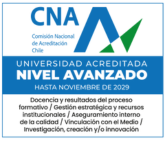The application of sulfate reducing bacteria (SRB) has emerged as an efficient biotechnology to reduce sulfate to sulfide and to mediate the precipitation of transition metals as sulfides. In the present work, hydrogen sulfide biogenerated by the SRB was delivered into a copper aqueous solution vessel to produce copper sulfide nanoparticles. The main physico-chemical properties were studied by TEM, XRD, UV–vis spectroscopy, fluorescence spectroscopy, UPS and XPS. In addition, the photocatalytic activities for organic dyes removal were investigated, showing a high degradation rate of MB and RD in aqueous solution. By changing the copper concentration during the synthesis process, main physico-chemical properties of copper sulfides nanoparticles can be controlled. For the lowest concentration, pure covellite flake-like nanostructures were produced. Higher concentrations produced spherical-like shapes with the presence of SO42− on the surface. Experimental results showed a promising way to obtain valorous copper sulfides nanoparticles by using dissimilatory reduction of sulfate mediated by SRB.
Keywords: CuS nanoparticlesPhotocatalytic activitySulfate reduction bacteriaBioreactor

